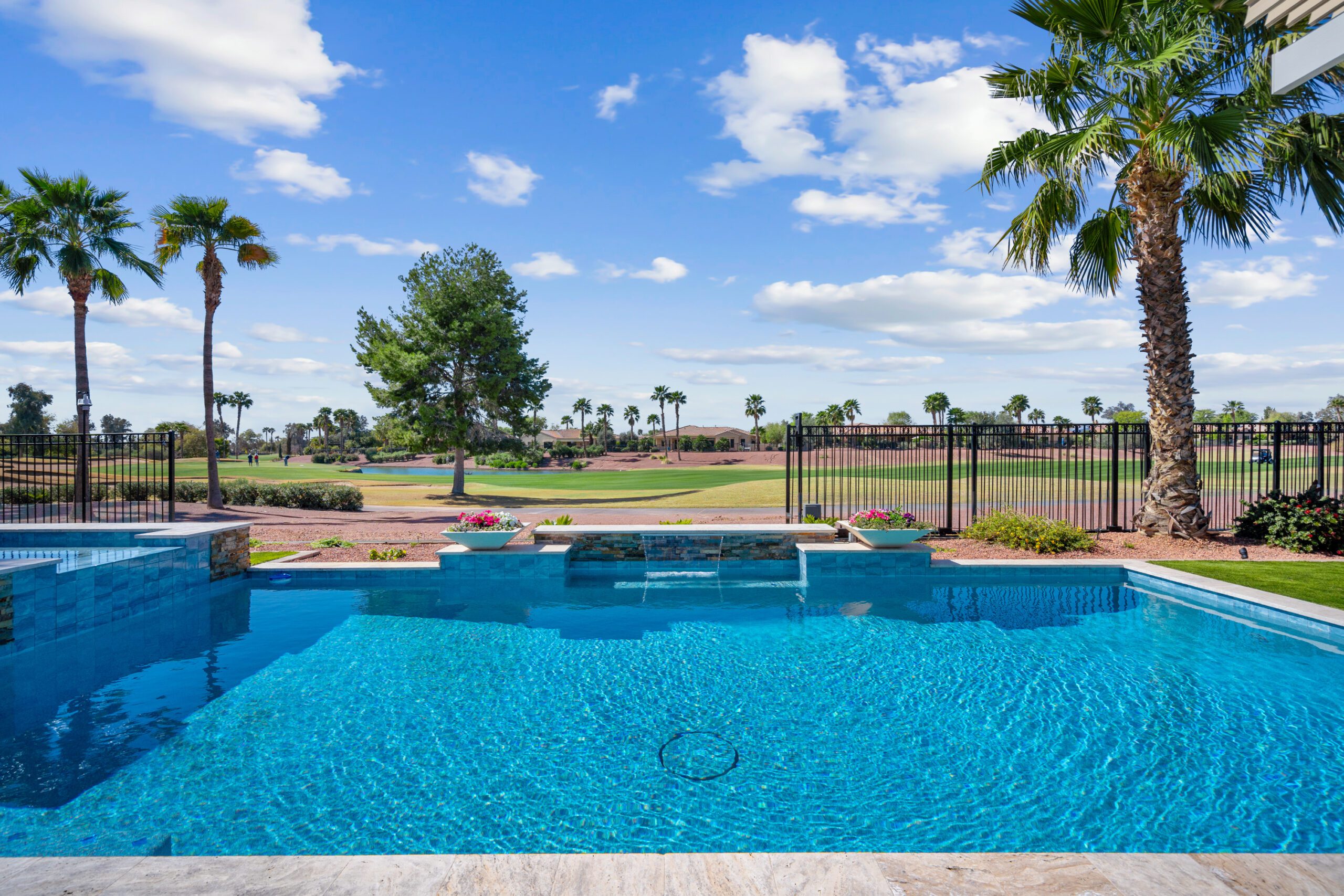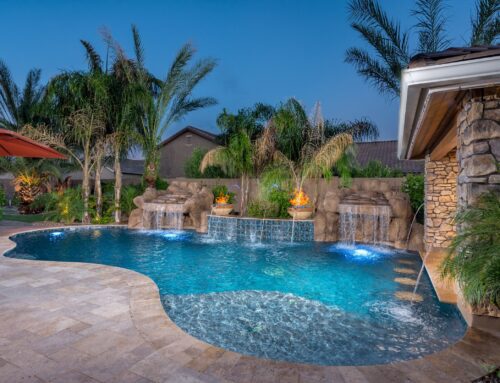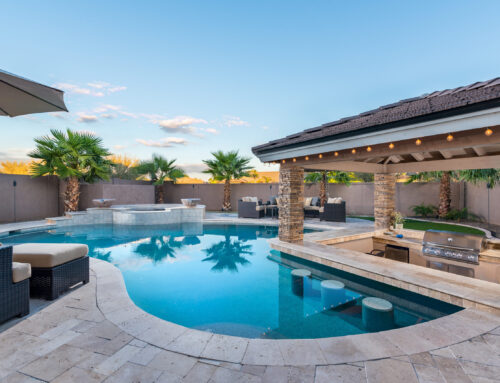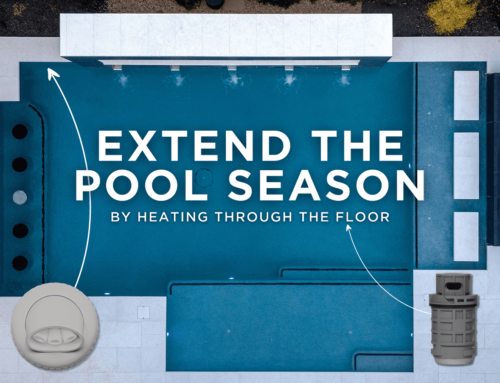Your pool is your oasis, but it can be a pain to keep clean. Especially the bottom. So, what should you use to clean the bottom of your pool?
A sparkling clean pool is a source of joy during the hot summer months, offering a refreshing escape from the scorching sun. However, maintaining the cleanliness of your pool, especially its bottom, is crucial for both its aesthetic appeal and the health of those who swim in it. Debris, algae, and other contaminants can accumulate on the pool’s floor, compromising water quality and safety. Regular cleaning not only enhances the pool’s beauty but also extends its lifespan.
In this comprehensive guide, we will explore the best methods and tools for cleaning the bottom of your pool. From manual pool bottom cleaners to automatic devices and pool chemicals, we’ll cover everything you need to know to keep your pool spotless.
Different Types of Pool Bottom Cleaners
Manual Pool Bottom Cleaners
Manual pool bottom cleaners require your active participation in the cleaning process. Here are two essential tools for manual cleaning:
- Vacuums: Pool vacuums are equipped with hoses and suction capabilities, allowing you to manually remove dirt and debris from the pool bottom. They come in various designs, including handheld and automatic models.
- Brushes: Pool brushes help dislodge stubborn dirt and algae from the pool’s surface. They are essential for prepping the pool before using a vacuum.
Automatic Pool Bottom Cleaners
If you prefer a more hands-off approach to pool cleaning, automatic pool bottom cleaners are your best bet. They come in two main categories:
- Robot Vacuum Pool Cleaners: These intelligent robots navigate your pool, using sensors to detect and remove debris from the bottom and walls. They are efficient and require minimal effort on your part.
- In-Floor Pool Cleaners: These built-in systems are installed during pool construction and consist of nozzles that pop up to release high-pressure water jets, pushing debris toward a central drain. They are discreet but may require professional installation.
One remarkable automatic pool bottom cleaner to consider is the Q360+ from Blue Square Manufacturing. Known for its cutting-edge technology and thorough cleaning capabilities, this device can save you time and effort in maintaining a pristine pool bottom.
Pool Chemicals
Certain pool chemicals can be used to tackle persistent issues such as algae and stubborn stains on the bottom of your pool. When used correctly, these chemicals can be a game-changer in maintaining water clarity and cleanliness.
Popular pool chemicals include:
- Chlorine
- Bromine
- Algaecide
Which Type of Pool Bottom Cleaner is Right for You?
Choosing the right pool bottom cleaner depends on several factors:
- Pool Size and Shape: The size and shape of your pool play a significant role in determining the most efficient cleaning method. Smaller pools may be well-suited for manual cleaning, while larger and more intricate designs benefit from automatic solutions.
- Budget: Consider your budget when deciding on a cleaner. Manual pool cleaning tools are generally more budget-friendly, while automatic devices can be a more significant upfront investment.
- Time Commitment: Evaluate how much time you’re willing to dedicate to pool maintenance. If you prefer a hands-off approach, automatic cleaners are a time-saving option.
How to Use a Manual Pool Bottom Cleaner
- Brush the Bottom: Start by brushing the pool’s bottom to loosen dirt and algae. Use a pool brush with stiff bristles to effectively dislodge debris.
- Vacuuming: After brushing, attach the vacuum hose to the skimmer or dedicated vacuum port. Move the vacuum slowly and methodically across the pool bottom, paying extra attention to dirtier areas. Empty or backwash the filter as needed during the process.
Using Pool Chemicals to Clean the Bottom of Your Pool
When dealing with specific pool problems like algae or stains, follow these steps:
- Read Instructions: Carefully read and understand the instructions on the pool chemical label. Always follow safety guidelines, and use protective gear as recommended.
- Water Testing: Test your pool water chemistry before and after using pool chemicals. This helps you gauge the effectiveness of the treatment.
Benefits of In-Floor Pool Cleaning Systems for Pool Bottoms
When it comes to automatic pool bottom cleaners, in-floor pool cleaning systems stand out as a premium option. These innovative systems offer a range of benefits that make them a popular choice for pool owners seeking efficient and hassle-free cleaning.
- Comprehensive Coverage: In-floor pool cleaning systems are designed to provide comprehensive coverage of your pool’s bottom and walls. They consist of strategically placed nozzles built into the pool floor, which release high-pressure water jets. These jets not only clean the pool bottom but also help to dislodge and push debris towards a central drain.
- Efficiency and Time-Saving: In-floor systems are known for their efficiency and time-saving capabilities. Unlike other automatic cleaners that may take several hours to clean the pool, in-floor systems typically complete their cleaning cycles much faster. This means you can enjoy a cleaner pool without long waits.
- No Obtrusive Equipment: In-floor systems are built into the pool during its construction phase, which means there are no additional devices or equipment floating in the pool. This not only enhances the pool’s aesthetics but also eliminates the need for storage and setup of external cleaning units.
- Minimized Manual Cleaning: With in-floor pool cleaning systems, you’ll significantly reduce the need for manual pool cleaning tasks. These systems can handle various types of debris, including leaves, dirt, and smaller particles, leaving your pool floor immaculate without your direct involvement.
- Water Circulation and Chemical Distribution: The water jets used in in-floor systems also contribute to improved water circulation in the pool. This enhances water filtration and ensures that pool chemicals are evenly distributed throughout the pool, resulting in better water quality and balanced chemistry.
- Long-Term Cost Savings: While the initial installation cost of an in-floor pool cleaning system can be higher than other automatic cleaners, it offers long-term cost savings. You’ll spend less on manual cleaning equipment, chemicals, and maintenance over time. Additionally, efficient water circulation can reduce energy costs associated with pool pumps.
- Customization and Zone Cleaning: In-floor systems often allow for customization and zone cleaning. You can program the system to focus on specific areas of the pool that may accumulate more debris, such as near trees or under water features. This targeted approach ensures efficient cleaning where it’s needed most.
- Low Maintenance: In-floor systems are relatively low-maintenance. They have fewer moving parts compared to robotic pool cleaners, which means fewer components to replace or repair. Regular maintenance typically involves checking the nozzles for clogs and ensuring proper water pressure.
- Enhanced Pool Hygiene: In-floor systems contribute to improved pool hygiene by preventing debris buildup and minimizing the growth of algae and bacteria. This results in a cleaner, healthier swimming environment.
- Increased Pool Lifespan: By consistently removing debris and preventing stains and algae growth, in-floor pool cleaning systems can contribute to the longevity of your pool’s interior finish and equipment, ultimately protecting your investment.
Additional Tips
Preventing Dirt and Debris Accumulation
To prevent dirt and debris from accumulating on the bottom of your pool:
- Cover your pool when it’s not in use to keep out leaves and other debris.
- Maintain a clean pool deck by regularly sweeping or using a leaf blower to remove fallen leaves and debris that can blow into the pool.
Cleaning Specific Types of Stains
For specific stains on the bottom of your pool:
- Algae: Regularly shock your pool and maintain proper water chemistry to prevent algae growth. For existing algae, use an algaecide as per the manufacturer’s instructions.
- Rust Stains: Use a specialized rust stain remover designed for pool use. Follow the instructions carefully, as these products can vary.
- Calcium Deposits: Scrub calcium deposits with a pumice stone or a dedicated calcium deposit remover. Be gentle to avoid damaging the pool surface.
Conclusion
In conclusion, maintaining a clean pool bottom is essential for the overall health and enjoyment of your swimming pool. Whether you opt for a manual pool bottom cleaner, an automatic device like the Q360+ from Blue Square Manufacturing, or pool chemicals, keeping your pool pristine is achievable with the right tools and methods.
In-floor pool cleaning systems offer an array of benefits that make them an attractive choice for pool owners who value efficiency, convenience, and the long-term health of their pools. While they may require an initial investment, the time and cost savings, along with the improved pool aesthetics and hygiene, make in-floor systems a worthwhile addition to any pool.
Regular cleaning not only ensures a beautiful pool but also promotes a safe and hygienic swimming environment. So, dive into cleanliness and enjoy your pool to the fullest.







